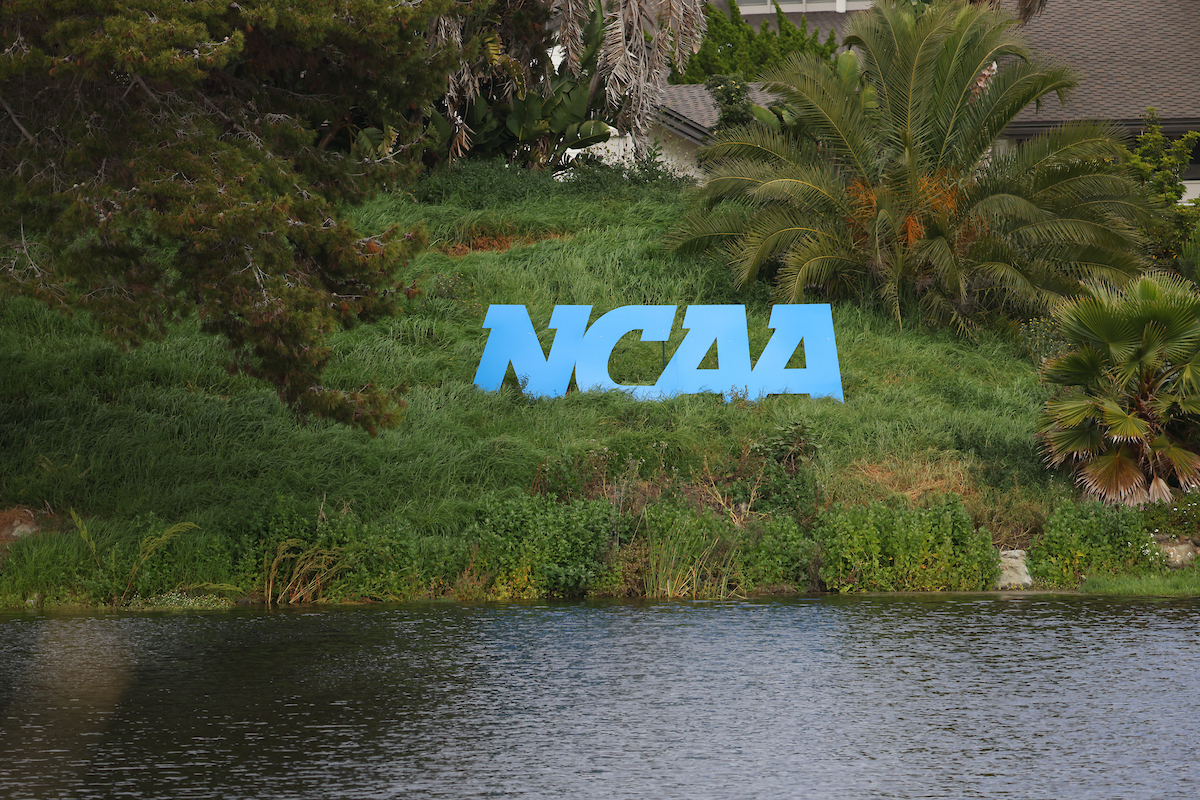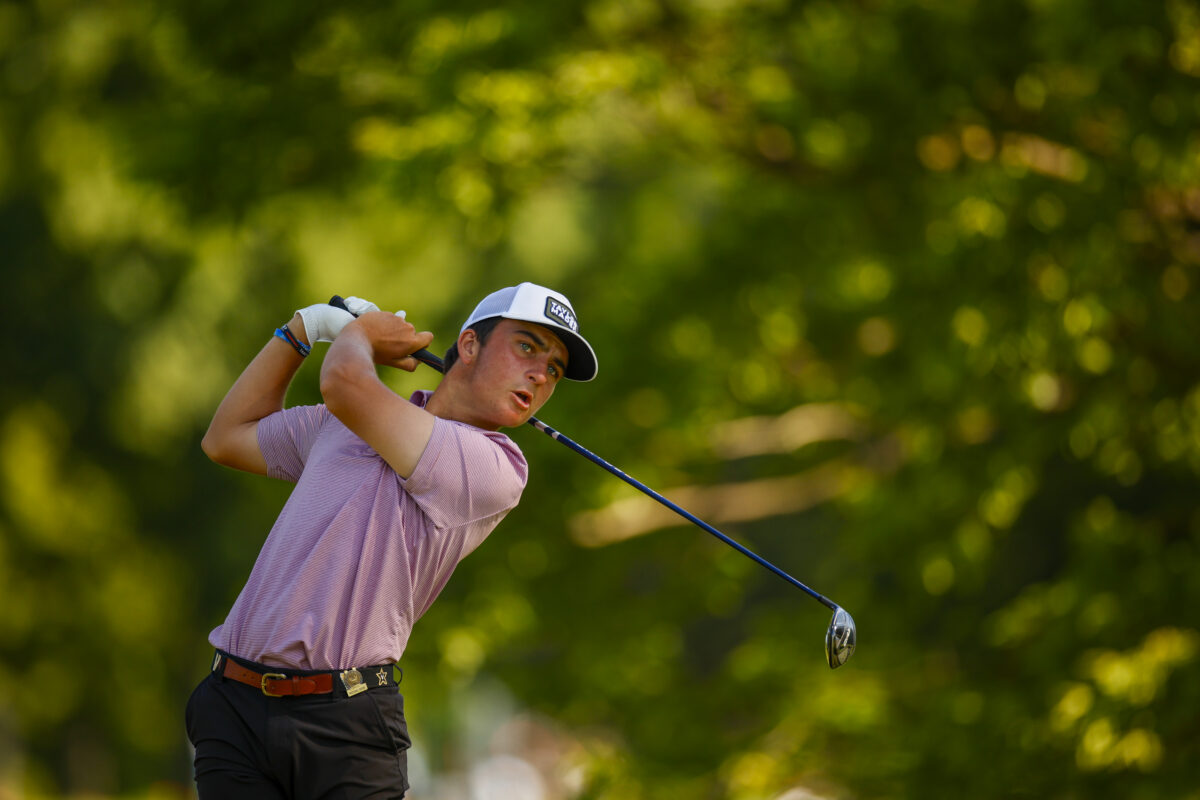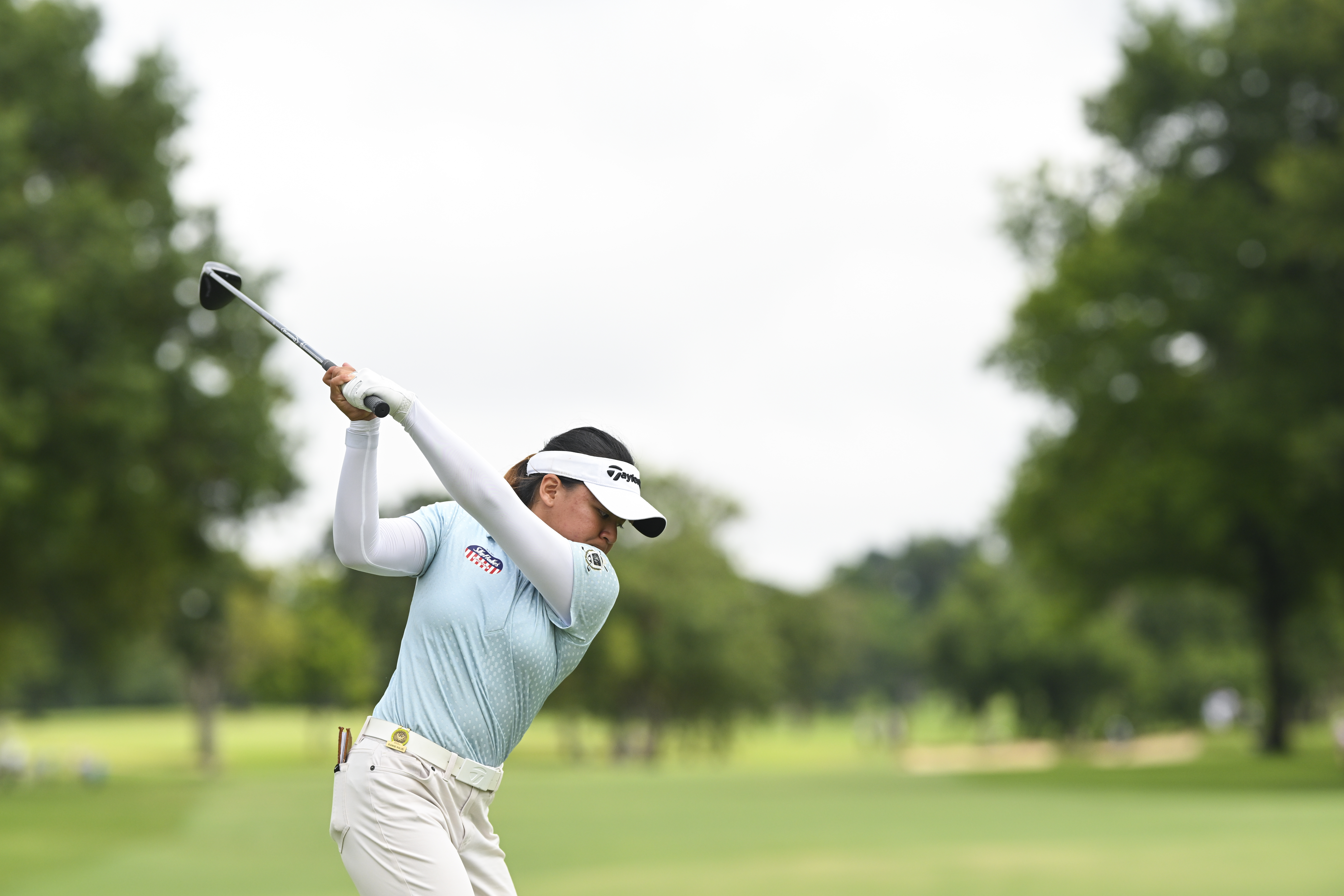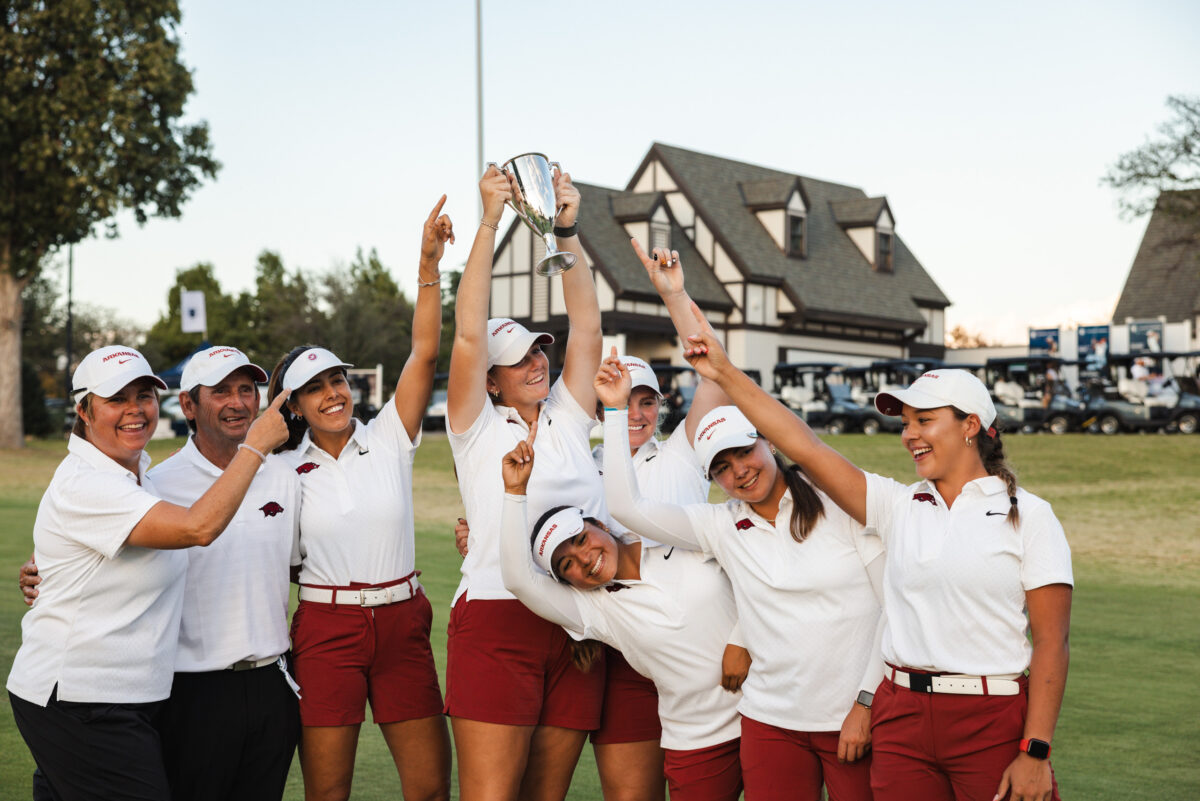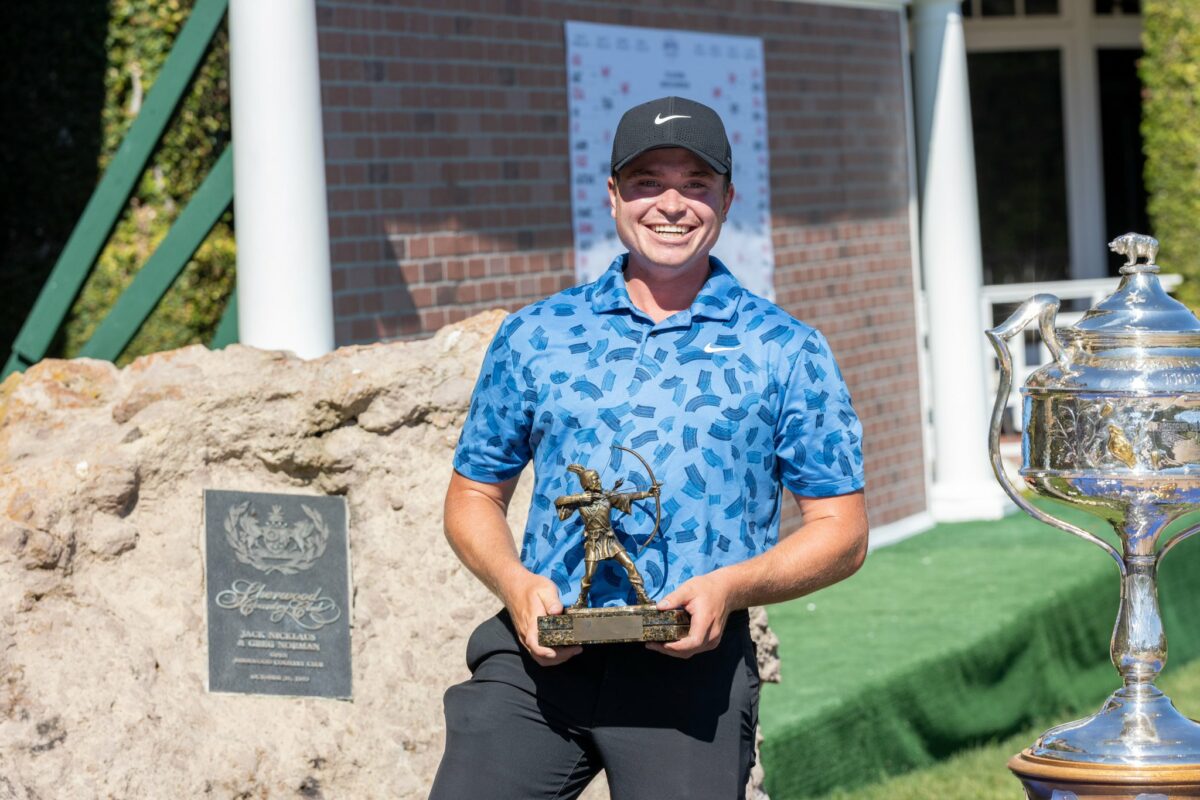The writing was on the wall.
Rumors were rampant at junior golf tournaments across the country this summer of a storm brewing on the horizon. Many juniors in the Class of 2025 had been committed to their future homes for nearly a year, if not longer. On National Signing Day, however, not all of them are where they thought they’d be.
That’s because of impending NCAA-mandated roster limits in college golf. And the results are just beginning to rear its ugly face.
“I pushed my son to get out ahead of this,” one parent, whose son was committed to a Big 10 program for nearly a year before being told he would have to move on late this summer, told Golfweek. “But we know other kids who were not ahead of this, and I don’t know what they’re going to do.
College sports is in the midst of its largest change ever, one that is severely altering the landscape of college athletics. A preliminary approval granted by the U.S. District Court of Northern California last month for the pending $2.78 billion House vs. NCAA settlement means schools will be allowed to directly compensate players via revenue sharing. In addition, scholarship limits are being removed across all Division I sports that opt into revenue sharing.
As a part of that agreement, the NCAA plans to impose roster limits in each sport, beginning in fall 2025, which means current players and recruits have seen playing opportunities vanish in the blink of an eye.
The Class of 2025 is the first victim of the changes, but it’s likely to affect the Class of 2026 and current college players even more in the coming year.
Each school is likely to lose at least one roster spot, if not numerous. Add it all up, it means hundreds of student-athletes who are on rosters this year, or thought they were signing to join their dream school Wednesday, are going to have to find a new place to play in 2025 and possibly beyond.
“I think a lot of the coaches are not behaving like adults here and doing what is the right thing to do with the kids and let them know fast enough to make a decision,” said the parent, whose son is signing with a mid-major program Wednesday. “I don’t feel very bad for the coaches. I know they’re mad about it, but, you know, they could have called every kid in July and told them this is happening and they should look for another spot because they don’t know what they’re gonna be able to do.
“But they chose not to do that, and now they’re all mad.”
While some schools were informed over the summer about the potential changes, Golfweek has learned many still haven’t heard guidance about what number of roster spots they need to be at ahead of next season, and others only learned in recent weeks about what guidelines they would have to follow, leaving a mad scramble for coaches trying to decide what to do with commits and those on the current roster.
The new roster maximum in college golf is expected to be nine players, which is the number the Big 10 Conference is planning its 2025-26 rosters around. In the Southeastern Conference, that number is eight roster spots, meaning one playing opportunity for current and prospective athletes.
To satisfy Title IX requirements, that number could be even lower at other schools.
The elite junior golfers and players on current rosters won’t be affected by this change. However, elite players make up a minority of all Division I golfers, which is why this National Signing Day is unlike any other before it.
For example, on the men’s side, defending national champion Auburn has 10 players on its 2024-25 roster. Three of those players are seniors, but the Tigers are signing three players Wednesday, meaning they’ll be two over the SEC roster limit. That means tough decisions are coming, and Auburn is far from the only school that faces that reality.
It’s most Power-4 programs across the country.
The situation is more severe at other schools, like Oregon, which has 15 players (and only three seniors) on the roster. That means if every player who could return did in 2025, at least three of them wouldn’t be allowed on the roster because of the new limits.
Some mid-major schools that don’t opt into revenue-sharing won’t have roster limits, which is another wrinkle that hasn’t been ironed out quite yet. Ultimately, those programs could benefit from having the ability to have a larger roster.
Then you take into account recruiting classes, where again, the top players won’t have an issue finding a home. Past that, it’s all dependent on roster limits, meaning plenty of talented players are likely to be looking for a home on mid-major rosters.
Multiple coaches told Golfweek they aren’t focused on recruiting junior golfers this year or for the Class of 2026, instead focusing on the transfer portal to fill holes on their roster. If they even have any.
And the trickle-down effect continues. For individuals, this is one of the worst things to happen to college golf. For the sport in general and its depth, college golf is undoubtedly going to be deeper in future years because of the roster limits. The ceiling may not go up, but the floor is being raised where mid-major programs are going to get a boost and even lower-level Power 5 programs thanks to access to players they wouldn’t have had even a year ago.
Many student-athletes will end up with more playing opportunities thanks to roster limits, even if they’re not at their original or dream school. Instead of having to fight for a roster spot at a top-25 program, talented players can go to a mid-major school and play right away.
College golf is in as good of a place as it has ever been. The future of recruiting is hanging in the balance thanks to roster limits and fewer opportunities for junior golfers to get into the sport. The sport is going to look different as soon as next fall.
For those athletes who aren’t keeping up with the changing landscape, they could be left without a place to play. And it’s a reality many recruits were faced with ahead and on National Signing Day.
“I think my son is ending up at a better place, a better school, a better fit, a better golf program for him,” one parent said. “But I don’t think that’s going to be the case (for everyone).”



